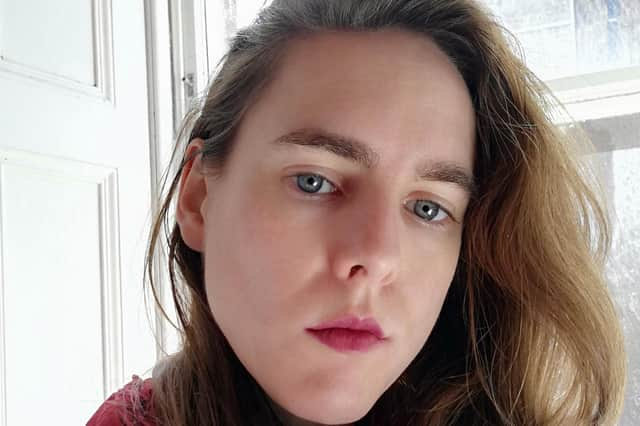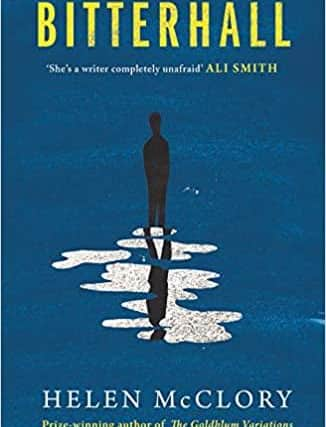Book review: Bitterhall, by Helen McClory


Helen McClory is an extremely accomplished and intelligent novelist, which is what makes Bitterhall such a delight and a problem. At the very beginning the reader is slapped on the face with a silk glove: it announces itself as a challenge. “When exactly is this happening, and to whom is it happening, and who is making it happen? We begin to get tricky, don’t we, when I write in the first person. What tense do my intrusive thoughts manifest in?.... Everything is an aside. Except the centre. That is the centre. Find it”. Bold words indeed, and challenge duly accepted.
The reader believes that this opening fanfare consists of the words of Daniel Lightfoot. He is an archivist of sorts, and specialises in the 3D replication of things, attempting to make ideal copies. He rents a room in “the Minto house”, owned by Minto, a reclusive older man. A new flatmate moves in, the ravishingly handsome Tom, who has an ill-defined job in public relations. Although Daniel has an almost immediate crush on Tom this is complicated by Tom having a girlfriend, Órla, who is a doctoral student working on codicology. As she explains it, “I’m the academic who foregrounds the text within its book”; her speciality is marginalia and doodles and all the accretions a book accumulates through use. Daniel’s sexuality is not exactly a secret, but he does have one. He has stolen a hand-written 19th century diary from his friend Andrew, which purportedly tells episodes from the life of James Lennoxlove of Bitterhall. The diary seems to indicate that Lennoxlove was witness to a murder. But Tom also develops an obsession with the book, and Órla will attempt to unravel it too. A party at Andrew’s house, in interwar period dress, will be the crucible for their stories.
Advertisement
Hide AdThe novel is intricately structured. As already stated, we begin with Daniel; but the first person narrative then shifts to Órla and then again to Tom. Then comes the finale, with the voices in recapitulation and a terminal “Us”. So we have the same story told by three narrators – not in itself original, as indeed the poet Robert Browning pioneered the form with The Ring And The Book. But it makes the reader part-sleuth. If you are leafing through it wondering whether to buy (you should), I would suggest that you compare and contrast pages 47 and 248. The question that arises is the reason behind the differences. As the reader is forewarned in the first pages, “intent is the issue too”.


Bitterhall quickly establishes itself in the great Scottish gothic tradition of Hogg’s Private Memoirs And Confessions Of A Justified Sinner and Stevenson’s Strange Case Of Jekyll And Hyde. It is a novel of splits, doubles, ghosts, the cleaving and the cloven. In some ways, it reminded me of the late Iain Banks saying that his ambition with The Bridge was to take on the dual narrative of Gray’s Lanark and do it with three. It is crucial here that we have three voices, and even the sum of them is not the entirety of the story. Then there is the question of the satellite characters and which might be a puppet-master: there is the oddball Andrew, his aloof family, the intermittent Badr, a fellow housemate and old man Minto. This might not be a complete solution, but I was struck that the family name of the Earls of Minto (in reality) is Elliot-Murray-Kynynmound: a winked triple, or a sheer coincidence?
The reader is quickly beguiled by the novel, as much as the characters are by the mysterious diary. They learn fairly quickly that there is no such place as Bitterhall and that the diary contains strange errors, so what kind of a document is this: deliberate fantasy, art naif ravings, something cryptic to be decoded, opaque confession, journal á clef? The problem is twofold, not triplicate. On a basic level, the characters think in a very literary manner – examples might be “can we feel our circuitous pointlessness?” or “what a charming uninkling, then”. None of this is bad writing. It is just slightly attention seeking. McClory does, for example, have a penchant for inventing adverbs. But there is a sense that the characters know they are in a novel, and must conduct themselves accordingly.
The other problem is more complex. Some creative writing courses ask students to write a critical reflection alongside their imaginative work. In Bitterhall, it is almost as if the thesis and the novel are interleaved, like filo pastry. With epiphanies like “I kissed Tom or not-Tom”, or “I’m going to stop calling you you now. There are so many yous” or “when I came to myself I felt both better and worse – worn out but rejuvenated – real and unreal” comes a sense of “yes, we get it already”. The idea of the self being fissiparous and inherently plural does mean that the novel has the appropriate amount of eerie, but it can feel like its own favourite critique of itself.
One thing I would say is that I ended it wondering what would happen to the characters next. There is a diminished seventh feel to Bitterhall, that four-note chord that might resolve itself anywhere. That I cared is a testament to its power.
Bitterhall, by Helen McClory, Polygon, £9.99
A message from the Editor:
Thank you for reading this article. We're more reliant on your support than ever as the shift in consumer habits brought about by coronavirus impacts our advertisers.
If you haven't already, please consider supporting our trusted, fact-checked journalism by taking out a digital subscription at https://www.scotsman.com/subscriptions